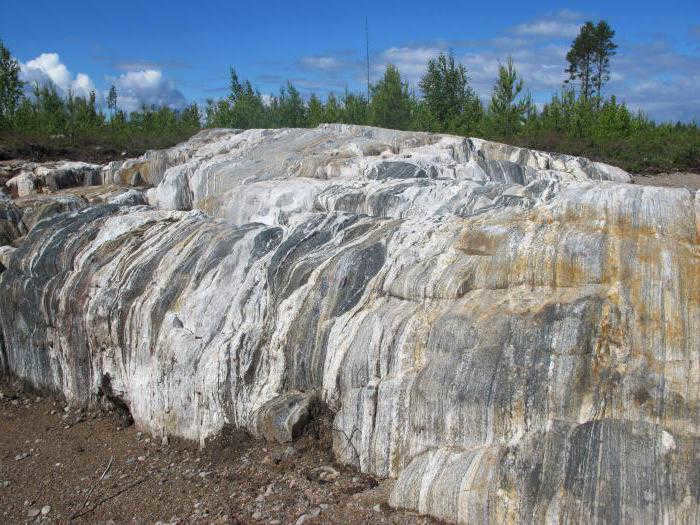The Earth’s crust finished forming about 3.8 billion years ago, marking the origin of life on Earth. Scientists have discovered that the first living organisms emerged in aquatic environments, and it took another billion years for the first creatures to venture onto land.
The development of terrestrial flora was aided by the evolution of plant organs and tissues, as well as the ability to reproduce through spores. Animals also underwent significant evolution and adapted to life on land, acquiring internal fertilization, the ability to lay eggs, and pulmonary respiration. The formation of the brain, along with both conditional and unconditional reflexes and survival instincts, was a crucial stage in their development. Subsequent animal evolution laid the foundation for the emergence of humankind.
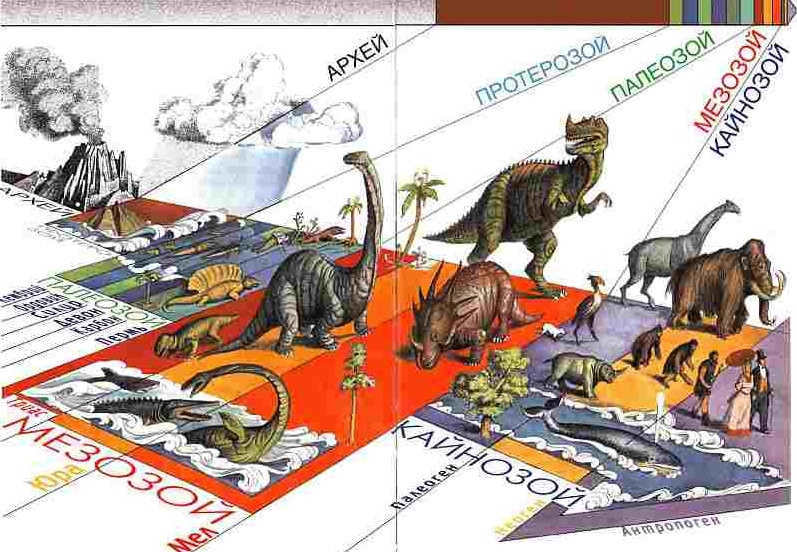
The classification of Earth’s history into eras and periods provides insight into the unique characteristics of life’s evolution on the planet during different time intervals. Scientists identify significant milestones in the development of life on Earth within distinct time segments called eras, which are further divided into periods.
- Archean;
- Proterozoic;
- Paleozoic;
- Mesozoic;
- Cenozoic.
Archean Eon

The Archean Era commenced approximately 4.6 billion years ago, when the Earth was in its early stages of formation and devoid of any life forms. The atmosphere consisted of chlorine, ammonia, and hydrogen, with temperatures soaring to a scorching 80 degrees. Radiation levels surpassed the permissible thresholds, rendering the emergence of life impossible under such harsh conditions.
It is theorized that around 4 billion years ago, our planet experienced a collision with a celestial body, resulting in the creation of the Moon as Earth’s satellite. This event played a pivotal role in the progression of life, stabilizing the planet’s axis of rotation and facilitating the purification of water structures. Consequently, the first forms of life emerged in the depths of the oceans and seas: protozoa, bacteria, and cyanobacteria.
The Proterozoic Era
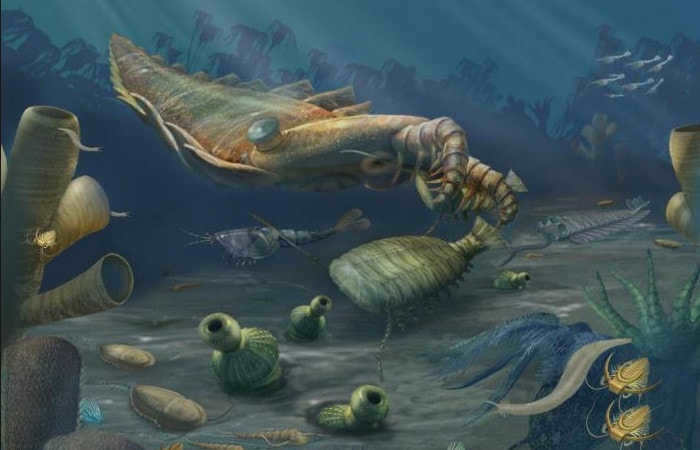
The Proterozoic Era spanned from approximately 2.5 billion years ago to 540 million years ago. Fossils of single-celled algae, mollusks, and ringworms have been discovered. Additionally, the formation of soil began during this time period.
In the early stages of this era, the air lacked oxygen. However, as bacteria in the oceans started to produce increasing amounts of O2, the atmosphere became oxygenated. Once oxygen levels stabilized, numerous organisms underwent evolutionary changes and adopted aerobic respiration.
The Paleozoic Era
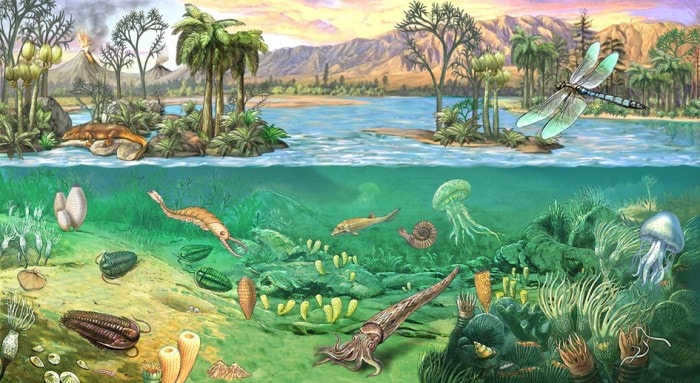
The Paleozoic Era is comprised of six periods.
The Cambrian period (530 to 490 million years ago) is marked by the emergence of all plant and animal species. Algae, arthropods, mollusks, and the first chordates (Haikouichthys) appeared in the oceans. The land remained uninhabited, and temperatures remained high.
The Ordovician period (490 to 442 million years ago). Lichens made their first appearances on land, and megalograpt (an arthropod representative) started coming ashore to lay eggs. Vertebrates, corals, and sponges continued to evolve in the oceanic column.
The Devonian period (418 to 353 million years ago) is characterized by the emergence of the first forests, predominantly consisting of ferns. In addition, this period witnessed the appearance of bones and cartilage in aquatic environments, as well as the transition of amphibians from water to land. Furthermore, insects, which represent new organisms, also originated during this period.
The Carboniferous Period (353 – 290 million years ago) saw the emergence of amphibians and the continental lowering. Towards the end of this period, a significant cooling occurred, resulting in the extinction of numerous species.
The Permian period (290 – 248 million years ago) was characterized by the presence of reptiles and therapsids, which are the ancestors of mammals. The hot climate during this period led to the formation of deserts, where only hardy ferns and some conifers could survive.
The Mesozoic Era
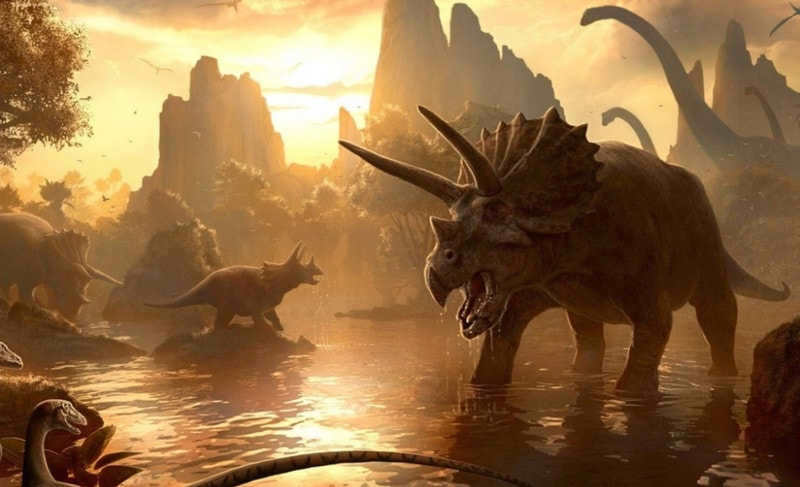
The Mesozoic Era is categorized into 3 distinct periods:
The Triassic period (248 to 200 million years ago). This period saw the emergence of holosemous plants and the appearance of the first mammals. Additionally, the landmass began to split into separate continents.
The Jurassic period (200 to 140 million years ago). During this time, covered plants started to emerge, and the ancestors of birds made their first appearance.
The Cretaceous period (140 to 65 million years ago). Flowering plants, known as covered seeds, became the dominant group of plants. Moreover, higher mammals and true birds experienced significant development during this period.
The Cenozoic Era

The Cenozoic Era is comprised of three distinct periods:
The Paleogene period, also known as the Lower Tertiary (65 to 24 million years ago), saw the disappearance of many cephalopod mollusks, while lemurs and primates made their first appearances. It was also during this time that parapithecines and Dryopithecines emerged. Furthermore, this period witnessed the development of early mammal species such as rhinoceroses, pigs, rabbits, and more.
The Neogene period, also referred to as the Upper Tertiary (24 to 2.6 million years ago), was marked by the diversification of mammals across land, water, and air. It was during this period that Australopithecus, the first ancestors of humans, emerged. Additionally, the formation of notable mountain ranges such as the Alps, Himalayas, and Andes took place.
Catarchaeus or Gadean, Azoya is the initial and earliest aeon in the field of geology. It is not fragmented into distinct eras and periods.
The most notable occurrences were the birth of the Moon and the Earth approximately 4.6 billion years ago. The Earth was a mass of molten rock, resembling regolith. There was an absence of atmosphere or hydrosphere. Numerous sources suggest the existence of volcanoes or gas emissions, although research has revealed that neither were present on Earth during that time.
In the Gadean period, the formation of the moon took place. According to one hypothesis, the Earth collided with the planet Theia, resulting in the ejection of substantial amounts of matter into outer space, which eventually coalesced to form the Moon.
During the Catarchean era, a day lasted merely 6 hours.
Following the Moon’s formation from the impact, some of the matter entered a gaseous state, giving rise to the primary dense atmosphere, which also encompassed water vapor and hydrogen.
At a temperature of 230 °C, liquid water emerged in the midst of the azoic atmosphere, remaining in this state thanks to the immense pressure.
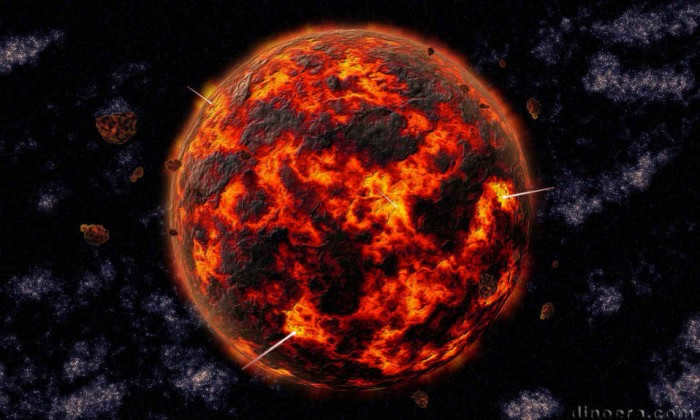
The Catharchean era, also known as Catarchaeus (from the Greek words “below the oldest”), marks the earliest geological aeon in the Earth’s evolutionary history. Taking place at the inception of Earth’s formation, Catharchean lasted for a staggering 600 million years, commencing approximately 4.6 billion years ago and concluding around 4 billion years ago.
The Earth’s history is divided into four eons: Catarchean (4600-4000 million years ago), Archean (4000-2500 million years ago), Proterozoic (2500-542 million years ago), and Phanerozoic (542 million years ago – present day). The last three eons are further divided into eras and periods, with the exception of the Catarchean. This initial eon is not well-studied from a geological perspective, as there are no deposits of this time period. Scientists believe that the original surface of the Catarchean was destroyed during the subsequent Archean period when it was submerged in the molten material of the upper mantle.
At the dawn of the Catarchean era, a single day lasted for only 6 hours. During this time, the Moon orbited the Earth at a distance of approximately 17 thousand kilometers. However, as the first aeon came to a close, the Moon gradually moved further away from the Earth, reaching a distance of about 150 thousand kilometers (which is the current distance of 384,467 km).
Following the Catarchean era, the next aeon was known as the Archei era. The initial period of this era was called the Eoarchei.
This period began with the formation of the Earth approximately 4.6 billion years ago. It extends until around 4.0 billion years ago, covering the first 600 million years of our planet’s history. In the modern geochronological scale, this era is not further divided into specific eras and periods [1].
Following the Archean event where the upper mantle melted and became overheated, resulting in the formation of a magma ocean, the entire original Earth’s surface, including its dense lithosphere, was rapidly engulfed in the molten upper mantle. This phenomenon is responsible for the lack of catarchea in the geological records.
Contrary to popular belief [3], there is no evidence of intense volcanic and hydrothermal activity occurring on the Earth’s surface [4].
Origin and Construction of the Early Earth
Following its birth, the primordial Earth emerged as a comparatively frigid celestial entity, with temperatures within its core remaining below the point of material liquefaction. Its composition was relatively uniform, lacking both a central core and outer crust [5].
Relief
The topography resembled the Moon’s surface, scattered with meteorites, but it had been smoothed over by frequent and powerful tidal earthquakes. The landscape consisted of uniformly dark gray material, covered with a thick layer of regolith. There were no volcanoes erupting with lava or spouting gas and water vapor on the surface of the early Earth. There was also no hydrosphere or dense atmosphere. Instead, the small amounts of gases and water vapor released during the impact of planetesimals and fragments of Protoluna were absorbed by the porous regolith.
In the early stages of the catarchean, each day lasted only 6 hours, which was roughly the same as the time it took for the Moon to orbit around the Earth. However, the Moon’s orbital period quickly started to increase [4].
During the catarchean, the Moon was positioned near the Roche limit, approximately 17,000 km away from Earth. However, the distance between the Moon and Earth was rapidly expanding at a rate of about 10 km per year. Towards the end of the catarchean, the increase in distance slowed down to 4 cm per year, and they were separated by approximately 150,000 km [6].
Before the Archean, there existed the Catarchean (4500-4000 million years ago) – the geological era of the Earth from its formation to the emergence of life [approximately, as the exact time of the origin of life is unknown]. Geologically, this period is referred to as unlabeled, or cathartic – a period during which the existence of sedimentary rocks is not known.
Alternative names for this period of geological time include azoi, gadei, pre-Archean, Priscian period, Hadean, Gadesian epoch, Gades era. Previously, the Catarchean (from Greek “below the oldest”) era was referred to as the ancient Archean era. There was also a dating of the Catarchaean era to 4.0-3.5 * 10 9 years – it is now considered the early Archaean.
The Catarchean encompasses the first half billion years of our planet’s existence, appearing 4.6 [or 4.8?] billion years ago.
Following the Archean event where the upper mantle melted and became overheated, resulting in the formation of a magma ocean within the geosphere, the entire original Earth’s surface, along with its dense lithosphere, rapidly became engulfed by the molten materials from the upper mantle. This phenomenon can account for the lack of evidence for catarchea in the geological record.. [I am curious as to the cause of this overheating – was it due to nuclear reactions occurring within the Earth’s core, gravitational contraction, or planetesimal bombardment?]
According to the most recent representations (2020), the Earth’s history of formation and development is believed to have commenced around the time of the Solar System’s origin. During this early stage, the gas giant planets embarked on a journey towards the center of the system and then back again, an event that greatly influenced the structure of our planet and its subsequent geological history.
Now, in accordance with this concept, the catarchei has been divided into two aeons. These two initial eons in Earth’s history are identified as:
1. Chaotic, encompassing the period of Earth and Moon formation between 4568 Ma and 4500-4450 Ma (i.e., the first 70 to 120 million years of the Catarchean).
2. [Please provide the information for the second eon]
- In the Chaotic Eon, which occurred 11 million years after the formation of the solar system, the Earth’s mass was only 63% of its current value. Over the next 30 million years, it gradually increased to 93% of its present-day mass. The timeline of these early events is not fully known and is based on various assumptions. Scientists rely heavily on data related to the decay of short-lived isotopes with half-life constants in the range of a few million years.
- Here are some sections of the page that discuss the development of life during the Catarchean Eon:
A Brief History of the Early Earth
Outdated Beliefs about the “Infernal Age”
Common misconceptions about the early Earth often depict a tumultuous period of intense volcanic activity and harmful hydrothermal conditions. However, this is not an accurate representation of what actually occurred. For example, some describe a time known as the “Catarchaeus era,” during which the Earth was believed to be lifeless, shrouded in a toxic atmosphere devoid of oxygen. It is said that volcanic eruptions were frequent, accompanied by lightning storms and harsh ultraviolet radiation that penetrated both the atmosphere and the upper layers of water. According to these accounts, the mixture of hydrogen sulfide vapors, ammonia, and carbon monoxide that enveloped the Earth led to the synthesis of the first organic compounds and the emergence of life-like properties.
However, upon closer examination, several questions arise regarding these claims:
- What makes the atmosphere “toxic” (even though it may not be toxic for some bacteria)?
- It is not necessarily the presence of intense ultraviolet light.
- It is not necessarily the fact that life originated from simple synthesized “organic” substances – life emerged on Earth almost instantly.
Present understanding of catarrhoea
A team of researchers from California has conducted a study on minuscule zirconia granules that are approximately 3 billion years old and were discovered in western Australia. These zircon structures were found to contain microscopic fragments of lava that date back more than 4 billion years. The formation of such a composition necessitates the presence of water and temperatures similar to those of the present day.
It is believed that in the early stages of Earth’s existence, there was active volcanic activity and the eruption of basaltic and ultrabasaltic (komatiitic) lavas.
The terrain resembled the pockmarked surface of the Moon, but was smoothed out by intense and nearly constant tidal earthquakes. It consisted mainly of dark gray primary matter, covered by a thick layer of regolith. During this time, there were no volcanic eruptions, no gas or water vapor spewing from the surface of the young Earth. There was also no hydrosphere [although it is possible that if there was, it would have been short-lived – around 100 million years], and the atmosphere was not dense. The small amounts of gases and water vapor released during the impact of planetesimals and fragments of the Protoluna were absorbed by the porous regolith.
The catarchean period, which marked the beginning of the day, lasted for a duration of six hours and was approximately equal to the orbital period of the Moon. However, the Moon’s orbital period increased at a rapid pace.
It is worth noting that any hypotheses suggesting an early melting of the Earth, along with the separation of its core and early degassing, are in direct conflict with numerous geological and geochemical data. Only the model of planetary formation proposed by V.S. Safronov in 1969 fully satisfies all of these data. According to this model, the young Earth was compositionally homogeneous, relatively cold, and therefore, a tectonically inactive planet.
The process of the Earth’s upper mantle melting was initiated approximately 600 million years after the formation of the Earth due to the influence of lunar tides and the decay of radioactive elements. This significant event is clearly indicated by the emergence of basaltic magmatism on the Moon around 4 billion years ago and the appearance of the oldest crustal rocks approximately 3.8 billion years ago. Simultaneously, the Earth’s matter began to differentiate in terms of density, with iron and its oxides separating to form the Earth’s core. However, the complete separation of the Earth’s core only occurred towards the end of the Archean period around 2.6 billion years ago, although the process of core separation continues to this day.
Based on the standard model of stellar evolution, it is estimated that the Sun was radiating approximately 30% less energy four billion years ago compared to its current output. Given these conditions, one would expect the Earth to have become a frigid sphere. However, geological evidence contradicts this notion, as it indicates that our planet possessed a warm and humid climate during that period. Scientists have proposed various theories to explain how the Earth maintained its heat, but a definitive explanation remains elusive. Some astrophysicists speculate that the Earth may have formed closer to the Sun, while others suggest that powerful coronal mass ejections played a role in regulating temperature.
In addition, we will consider fresh data regarding the presence of a robust magnetic field on Earth during the time of Catarchaea (approximately 4.2 billion years ago). This revelation emerged from an extensive examination of ancient phenocrysts comprising zircon crystals unearthed from the depths of Australia’s Jack Hills ridge. Previous assumptions held that the magnetic field could not have been present prior to 3.4 billion years ago.
The origin of conditions suitable for life
How rapidly did the Earth’s surface cool down following its fiery formation? The majority of scientists are of the belief that a super-hot climate persisted for 500 million years. This is primarily supported by the apparent absence of rocks from the primordial era that are older than 4 billion years, as well as the presence of fossils from more recent geological periods that indicate the emergence of life on Earth.
However, in the past five years, geologists, including a team from the University of Wisconsin at Madison, have unearthed numerous ancient zircon crystals whose chemical composition has altered our perspective on the early development of the Earth. These exceptionally durable crystals, akin to minuscule “time capsules,” contain evidence suggesting that life in the oceans and on the continents may have originated 400 million years prior to what is commonly believed [!].
It is highly probable that, during the initial 100 million years following the formation of the planet, the Earth underwent a rapid transformation. [Experts estimate that planetesimals fused together to form approximately 1/10th of the Earth’s mass within a mere 100,000 years] Moreover, the presence of water bodies on the solid Earth can be traced back to approximately 4.3 * 10 9 years ago [just 200 million years after the planet’s birth]. The Earth’s crust, oceans, and atmosphere emerged almost instantaneously, creating a conducive environment for the evolution of life [quite astonishing, indeed!].
The issue of when life first emerged on Earth is intricately connected to the manner in which it came into existence on our planet. It is well established that the Earth itself was formed approximately 4.5-4.6 billion years ago. Fossils of ancient organisms known as stromatolites, which are the petrified remains of bacteria, have been discovered in Western Australia and are estimated to be around 3.5 billion years old, dating back to the early Archean era. The oldest evidence of living organisms can be found in sedimentary rocks within the Ishua (Isua) Formation in Greenland, which are believed to be approximately 3.75 billion years old.
It is possible that during the formation of the Earth, there existed ancient organisms like protoviruses (non-parasitic) or nanobacteria in the planetesimals. This has been supported by studies conducted on Martian meteorites discovered in Antarctica. These organisms likely consisted of chains of single-celled forms, but were much smaller than typical Earth bacteria.
As per the terms and conditions, this space can be used for commercial links. Please refer to the terms and conditions for more information.
Keywords to search for information about the pre-Archean Gadesian era include: Russian: catarchei, catarchean aeon, Gadesian epoch, era of Gades, pre-Archean, ancient Archean, azoi, gadei, pre-Archean, priskoi, hadii, lifeless Earth; In English: Archaeozoic, Archean, Hadean, Gades, Cryptozoic.
There are multiple arguments against the belief that our planet formed through the accretion of gases and dust, despite the support it receives from geologists and physicists. This theory, however, serves as a foundation for studying the processes that led to the development of life on Earth. To better understand the geological history of our planet, scientists have divided it into various sections, such as eras, periods, epochs, and centuries.
Stages in the Creation of Earth
About 4.5 billion years in the past, the Earth was in a state of utter chaos, resembling a blazing inferno where volcanoes erupted sporadically, and the surroundings were engulfed in ash, dust, and flames. This is when the geological periods of the Earth began. The surface temperature soared to an astonishing 1,000 degrees Celsius. During this epoch, the atmosphere lacked air, consisting solely of water vapor, nitrogen, and carbon dioxide. The entire planet resembled a scorching sea of molten lava, making it seemingly impossible for any form of life to emerge. Scientists propose that during this period, the Earth collided with a celestial body called Theia, resulting in its fragmentation and the formation of the moon.
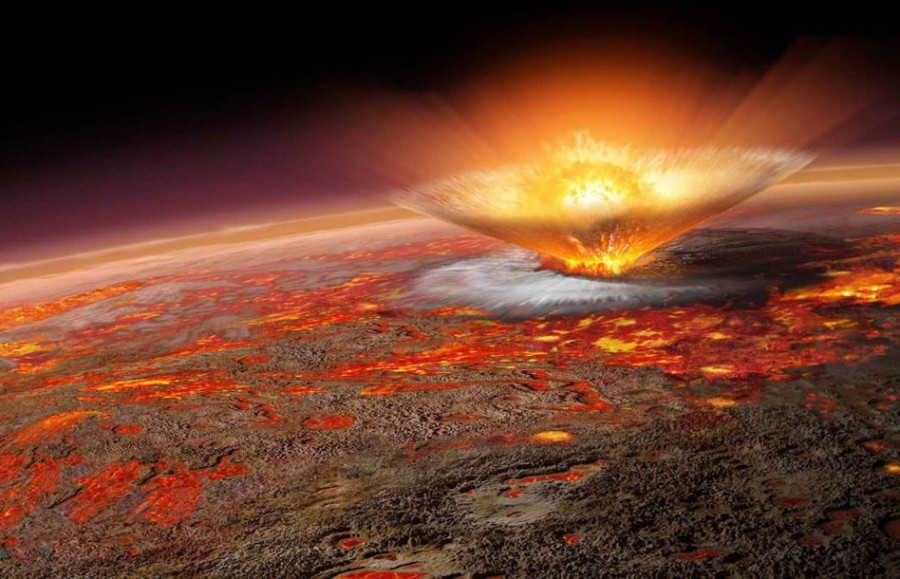
The Dodecambrian Era
This era marks the most extensive period of Earth’s development. Its exact duration remains unknown to humans. It represents the initial phase our planet went through before becoming a habitat for life in the universe.
The chronological order of Dodecambrian geological eras:
Mesoarchaean.
An atmosphere was formed as a result of the collision with another planet, however, the Earth remained uninhabitable. Continuous volcanic eruptions, never-ending meteor showers, cataclysmic events burning up oxygen – despite the fact that today a single meteorite can have catastrophic consequences, back then it was within these scorching space rocks that water made its way to the planet.
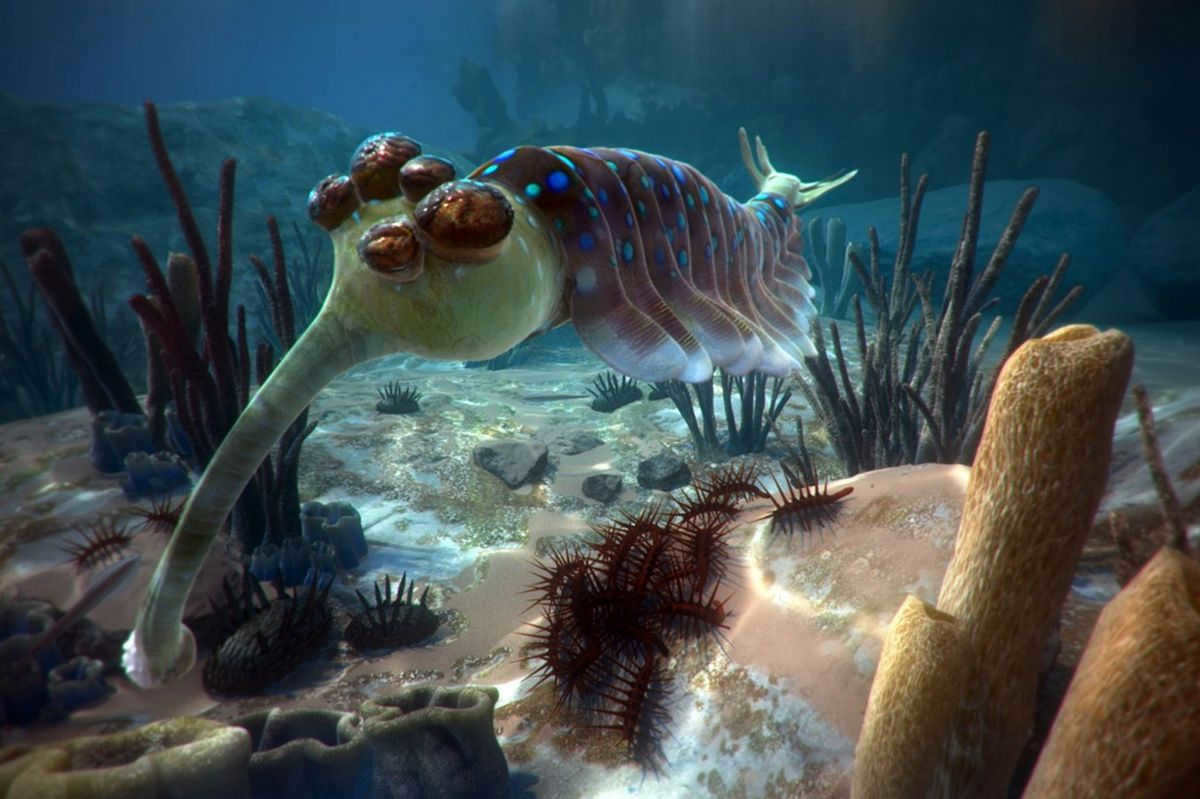
As a result of these changes, seas and oceans were created, and the surface temperature gradually decreased. During this initial geological era, the first RNA-like compounds emerged. These compounds later developed a lipid shell that became thicker, providing protection for the genetic material. In the midst of intense competition for energy, these compounds formed colonies, which served as the basis for multicellular organisms. This process was lengthy, but the Earth was no longer a scorching toxic sphere, and life gradually started to thrive. Thanks to photosynthesis, the planet became filled with oxygen, paving the way for the emergence of more advanced life forms. By the end of the earliest geological period, bacteria had already begun to inhabit the Earth.
The emergence of the first life likely occurred approximately 3.8 billion years ago and was comprised of prokaryotic cells, which were single-celled organisms lacking a nucleus and membrane. The introduction of familiar life forms took place around 570 million years ago.
Paleozoic Era
The geological timeline of the Paleozoic Era commenced during the Cambrian period, when bacteria and algae dominated the entire planet. For countless years, there was no significant evolutionary progress. However, the atmosphere became oxygenated thanks to green bacteria.
A chronological sequence of geological periods:
Oxygen in the water caused the iron to oxidize and settle at the bottom, forming large clumps. Over an immense span of time, it would transform into one of the fundamental minerals that are vital to our existence.
Approximately 4 billion years ago, an extraordinary event took place on Earth. Intense tectonic activity led to the formation of a supercontinent known as Rodinia. Alongside this geological phenomenon, volcanoes erupted all over the planet, spewing out vast amounts of carbon dioxide into the atmosphere. This gas combined with water vapor and eventually fell back down to the surface in the form of acid rain.
The consequences of this volcanic activity were far-reaching. The atmosphere became heavily laden with dust and carbon dioxide, preventing the Sun’s heat from being trapped, causing a significant drop in temperature. This marked the onset of the most severe ice age our planet has ever experienced. The Earth was now covered by a colossal three-kilometer-thick layer of ice, contrasting with the fiery epochs that preceded it.
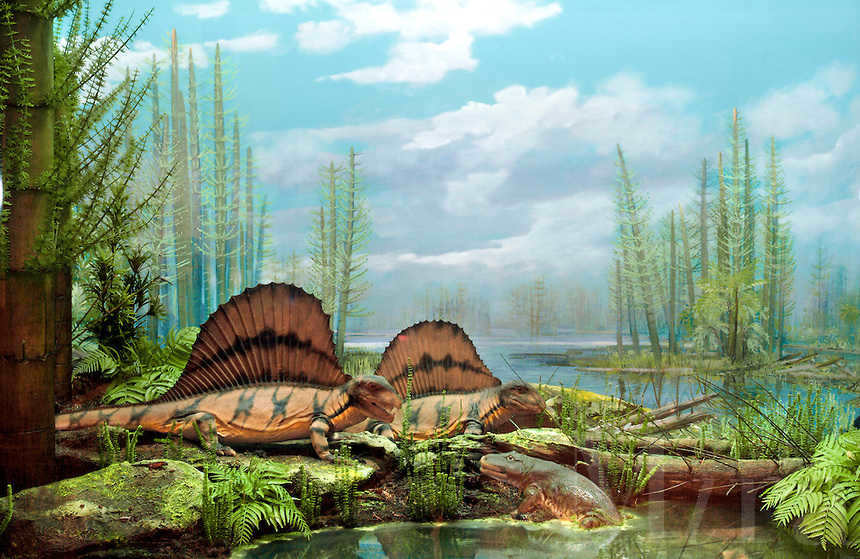
Be part of our journey towards the future
Join our team: we are pioneers in the fintech industry, serving 28 million customers and staying 5 years ahead of the market. We are committed to delivering exceptional results and constantly going above and beyond expectations.
The planet is experiencing a resurgence in tectonic activity, causing ice-covered volcanoes to erupt and release carbon dioxide back into the atmosphere. It took approximately 15 million years for the permafrost to completely thaw. Despite the harsh conditions, life managed to thrive on the planet. Bacteria underwent mutations, developed resistance, and adapted to survive and thrive even without heat and light.
Now, the planet is gradually becoming rich in oxygen, creating a conducive environment for life to flourish and establish its home. With a surface temperature of 22 degrees, it is the perfect setting for evolution. It was during the Cambrian period, a crucial phase in Earth’s history, that the first plants, worms, mollusks, and other protozoan organisms emerged.
At present, water is the sole habitat for life, but it is an exhilarating one. While multicellular organisms have yet to develop a skeletal structure, evolution has bestowed upon them a nervous system, keen eyesight, and sharp teeth. With these adaptations, they are now able to survive and even engage in hunting. Progress has not halted, as the world is teeming with diverse organisms that are poised to venture onto land.
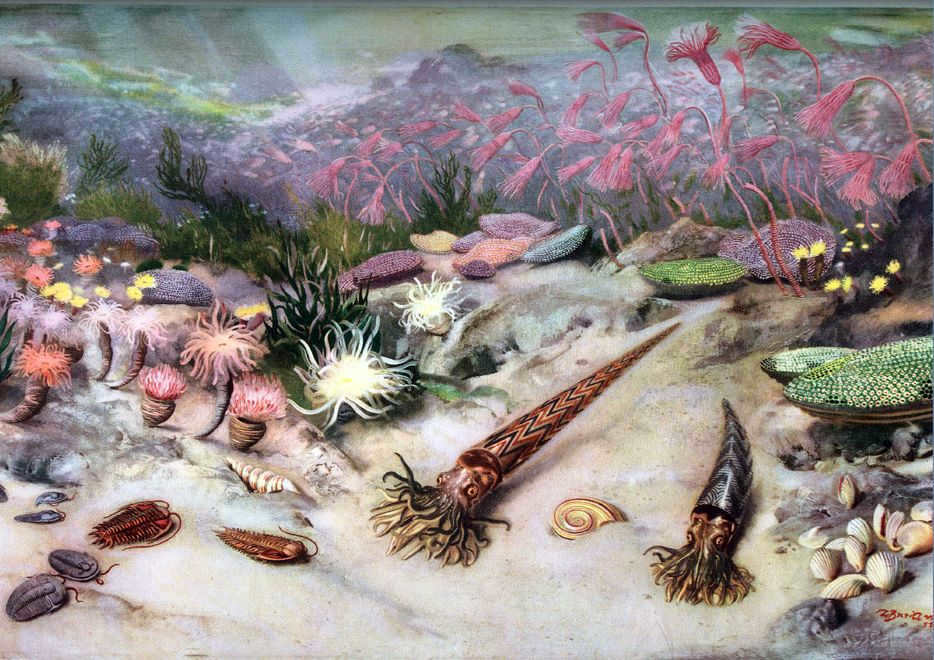
In the distant past, approximately 460 million years ago, a significant geological event occurred: a tectonic plate movement resulted in the formation of the supercontinent known as Gondwana. Over time, this massive landmass eventually broke apart into six separate continents. It was during this era that plant life began to emerge and adapt to the harsh conditions of the planet. At that time, the sun’s rays directly impacted the Earth’s surface, as the protective ozone layer had not yet formed. However, it would take another 150 million years for life to fully establish itself on land.
The Earth became home to plants and later, animals emerged to find food. Around 360 million years ago, these creatures resembled reptiles. However, nature took a harsh turn. Volcanoes resumed their eruptions, polluting the atmosphere and leading to the demise of the majority of surface-dwelling animals. Only those who managed to dig beneath the ground, seeking shelter from toxins and sustenance, were able to survive. In the geological records of our planet, this era is known as the Permian Extinction.
During this period, the earth went through a period of recovery following cataclysms. It was a time when large animals, both predatory and herbivorous dinosaurs, ruled the planet. After a million years, the first mammals, which would later become the ancestors of rodents, made their appearance. Once again, the earth became a habitat for living creatures. However, this peaceful existence was soon disrupted by the impact of a massive meteorite over 66 million years ago. This particular period in geology is commonly referred to as the Jurassic era, which was part of the larger Mesozoic Era.
A Timeline of Geologic Periods during the Mesozoic Era:
Scientists have proposed an alternative theory to explain the disruption in this era, suggesting that a volcanic eruption was responsible. This eruption released large amounts of dust that covered the sun, preventing plants from receiving light and ultimately leading to their death. This, in turn, disrupted the food chain, causing herbivorous animals to perish. As a result, predators also starved to death.
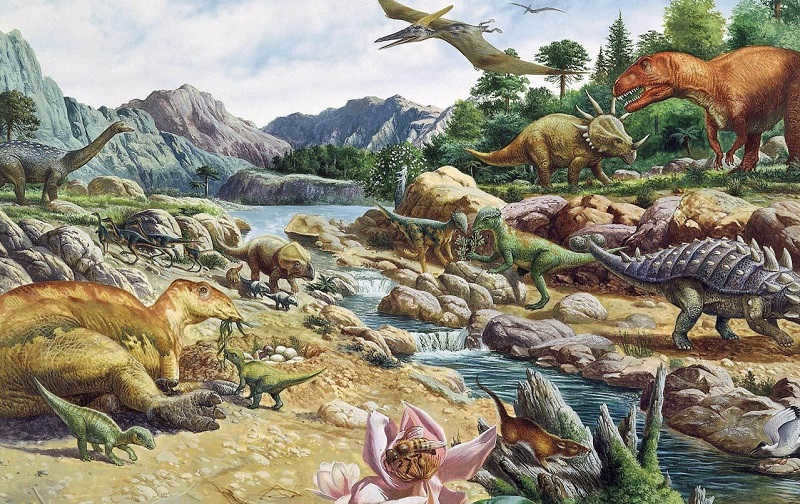
Over 400 million years ago, a multitude of creatures perished and sank to the bottom of the ocean, where they were eventually covered by a thick layer of sediment. The absence of oxygen and the immense pressure caused these deceased organisms to undergo decomposition, transforming into valuable resources such as oil and gas.
The Cenozoic Era
After the extinction of the large dinosaurs, the surviving small mammals were able to thrive and take control. This era also witnessed the evolution of humans.
Timeline of the geological periods in the Cenozoic Era:
The climate underwent significant changes within a relatively short span of time, becoming colder and drier compared to the Mesozoic Era. Evolutionary advancements were abundant during this period. An ice age affected a large portion of the planet, but life managed to adapt quickly. Various forms of life went on to evolve into their modern counterparts. The geological history of the Cenozoic Era is still ongoing and will likely continue until another mass extinction event occurs.
Final thoughts
The Earth has gone through numerous transformations in its journey to becoming a habitat for animals and humans. Not even cataclysms or a meteorite impact could halt the progression of life, ultimately transforming our planet into the blue marvel it is today. These transformative processes have also resulted in the creation of valuable minerals, which play a crucial role in driving technological advancements. The mass extinction of certain species has paved the way for the survival and evolution of other organisms, including humans, enabling us to reach unprecedented heights of development. The exploration of Earth’s geological eras has provided invaluable insights into our world and the origins of humanity.
Currently, it is established that life on Earth emerged approximately 3-3.5 billion years ago. Throughout this period, the planet experienced significant transformations including climate fluctuations, continental drift, and active geological processes. Vast expanses were submerged in water for millions of years, only to recede due to the intense sun and heat.
Our understanding of these processes relies on the examination of sedimentary rocks that formed layers over time. By conducting chemical analysis, scientists can determine their age and make inferences about the climate during that era. Radiocarbon analysis is also instrumental in dating fossils.

Archaean Era (derived from the Greek word archē meaning beginning)
The earliest era of Earth, which commenced approximately 3 to 3.5 billion years ago, lasting for 900 million years. During this period, the oldest living organisms were discovered: they were heterotrophs that inhabited the depths of warm seas. Oxygen was absent, and only anaerobic respiration was possible.
Throughout the Archean period, there was active volcanic activity and significant temperature fluctuations. Life on the Earth’s surface was impossible due to destructive UV (ultraviolet) rays. Consequently, life “sought refuge” at the ocean floor, where temperature fluctuations were less pronounced and UV radiation was scattered.
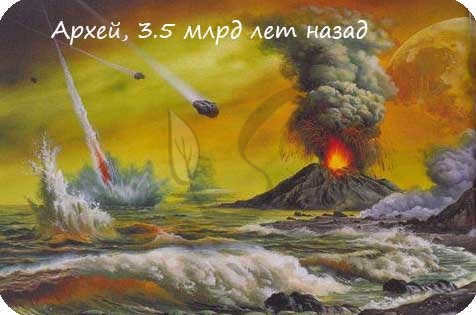
During the Archean epoch, the first organisms capable of photosynthesis emerged, known as blue-green algae or cyanobacteria. This marked the beginning of a gradual enrichment of the atmosphere with oxygen.
Little did anyone know at the time that this newly introduced element, oxygen, would shape the course of life on Earth. In the future, millions of species would evolve that depend on oxygen for survival, including you and me.
By the end of the Archean period, animals had evolved into both prokaryotic and eukaryotic organisms.

The Proterozoic Period.
The Proterozoic Period lasted for approximately 2 billion years. The Earth’s surface resembled an icy desert, resulting in a cold climate.
Life continued to evolve during this period. The kingdoms of plants, animals, and fungi emerged. The first multicellular organisms appeared, including coelenterates, sponges, algae, and ancestors of trilobites. Cyanobacteria, also known as blue-green algae, were abundant and played a crucial role in producing oxygen through photosynthesis.
As the Proterozoic Period progressed, the concentration of oxygen in the atmosphere increased and approached 1%, which is known as the Pasteur point. This critical threshold allowed for the evolution of oxygen respiration and the stable functioning of aerobic organisms.
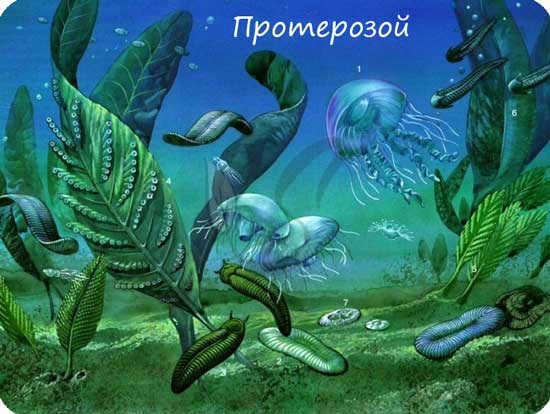
Paleozoic Era (Greek: palaios – ancient)
There were significant changes in the climate during the Paleozoic Era, transitioning from a cold climate to a moderately humid climate and then to a warm, dry climate. As a result of the melting of land glaciations, vast areas became filled with water.
While the majority of plants and animals in this era lived in the sea, there were also significant developments on land. The first terrestrial fungi and lichens appeared on the coast, marking an important milestone in the colonization of land. In the sea, the animal world was thriving with the emergence of trilobites, swordtails, coral polyps, and echinoderms at various depths.
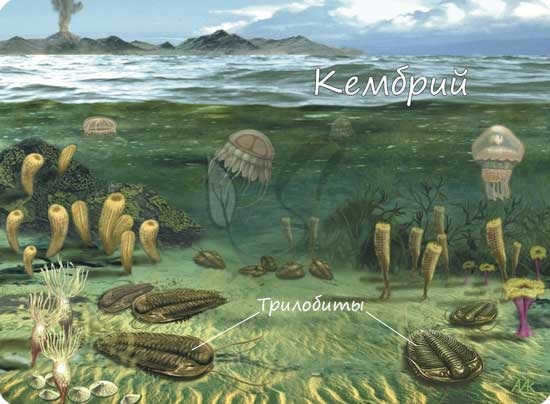
The majority of the land experienced extensive flooding, making it rare to see terrestrial animals. In the ocean, foraminifera and radiolarians thrived.
In the warm seas, various organisms such as coelenterates (including coral polyps), echinoderms, and mollusks flourished. It has been determined that the initial chordate-like creatures, specifically jawless animals, inhabited this era.
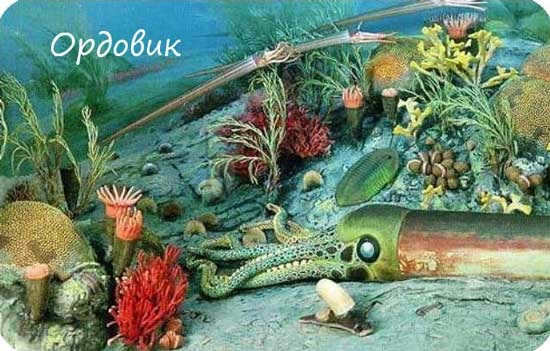
The climate becomes more arid, the land begins to rise, causing the water to recede, creating favorable conditions for the emergence of terrestrial species. The Silurian period is characterized by these significant events, as it marks the development of plants and animals on land.
In the intertidal zones, the first land plants start to appear, such as rhiniophytes and psilophytes, which still share similarities with algae. However, psilophytes are the pioneers in colonizing the land, as they develop conductive and mechanical tissues that were not necessary for algae.
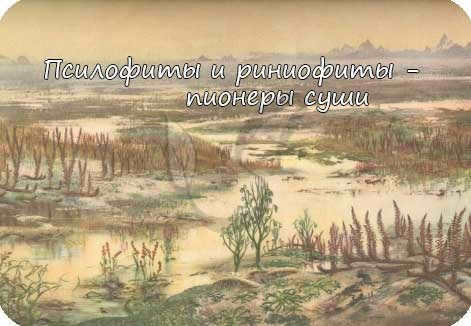
The emergence of the first terrestrial creatures took place approximately 400 million years ago. These creatures were millipedes and spiders, and it is believed that they evolved from trilobites. Trilobites had the ability to survive on land for extended periods of time, even during low tide. The newly formed land provided these creatures with ample space and a relaxed environment, as there were no predators and limited competition. These favorable conditions led to a rapid increase in population through reproduction.
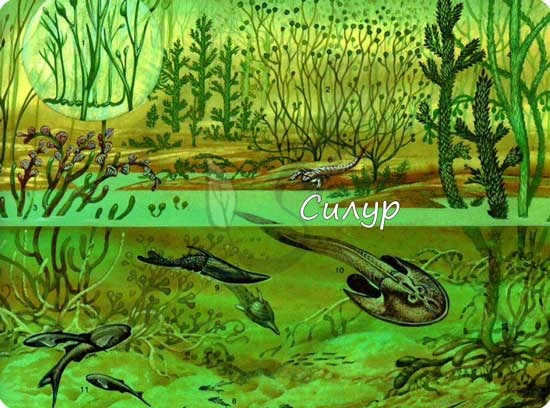
During this time period, fish reigned supreme in the oceans. There were various types of cartilaginous fish that actively swam and used their jaws to capture food. All of the known groups of fish that exist today originated during this time.
Some fish that lived in oxygen-poor or drying bodies of water developed the ability to use their fins to crawl from one body of water to another and breathe air from the atmosphere. This led to the emergence of fish that could breathe both underwater and on land, as well as fish that could walk on land. These unique species were known as double-breathing and keystepper fish.
Toward the end of the Devonian period, the first amphibians, known as ichthyostegi and stegocephals, evolved from the keystepper fish. Additionally, forests of trees consisting of horsetails, plaunas, and ferns began to emerge.
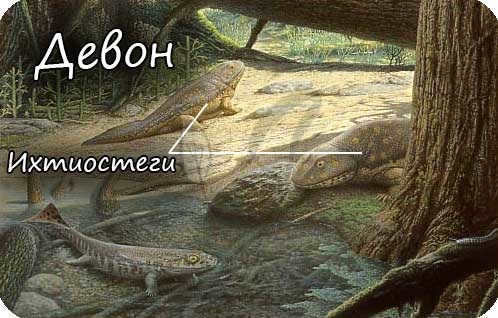
During the Carboniferous period, the continents experience further subsidence, resulting in the transformation of some land into marshes. The initial warm and humid climate gives way to a cold and arid climate towards the end of this era.
An impressive development during this time is the rapid growth of tree fern forests, which can reach towering heights of up to 40 meters. However, a significant die-off of ferns occurs during this period, resulting in the formation of vast coal deposits, which eventually give the period its name.
Another noteworthy development during the Carboniferous is the emergence of seed plants, which no longer rely on water for reproduction, allowing them to spread further inland.
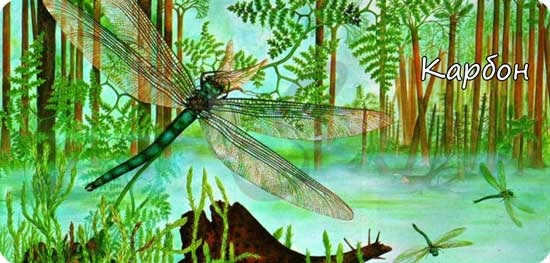
Seas still teem with foraminifera, radiolarians, corals, and molluscs. The seas are still populated by foraminifera, radiolarians, corals, and molluscs. In addition, the first insects have made their appearance, including cockroaches, dragonflies, and hard-winged insects. As the period draws to a close, reptiles start to emerge. What sets these reptiles apart is their ability to reproduce without the need for water, allowing them to inhabit previously uninhabited, dry areas.
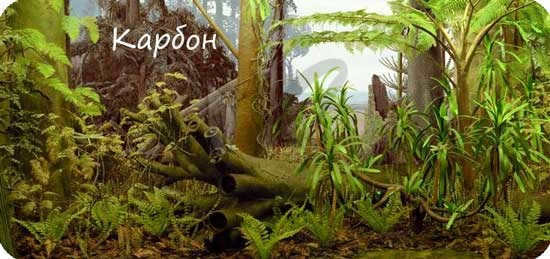
During the Permian period, there is an increase in volcanic activity and a significant retreat of the sea, resulting in the emergence of vast stretches of land. This leads to a dramatic shift in climate, becoming more continental in nature.
The drastic changes in environment prove to be too much for many species of animals and plants, resulting in the extinction of trilobites, numerous mollusks, large fish and insects, a significant portion of amphibians, as well as tree ferns, horsetails, and plaunas.
Nature abhors a vacuum, and as a result, individuals that are able to adapt survive, reproduce, and fill the ecological niches left by the extinct species. Reptiles experience a rapid development, giving rise to lizard-like creatures, while around the same time, the first mammals also make their appearance.
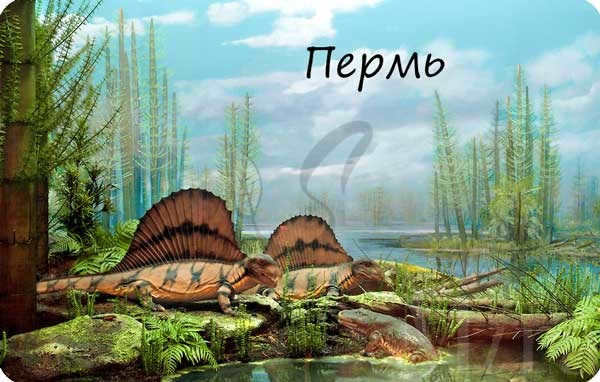
If you want to easily remember the periods of the Paleozoic Era, I suggest using the mnemonic device: “Every Excellent Student Must Smoke Papyros.” By focusing on the initial letters of these words, you will notice that they correspond to the initial letters of the Paleozoic periods and are arranged in the correct sequence.
The duration of the Mesozoic Era was 186 million years. If we were magically transported back to that faraway time, we would immediately notice the striking similarities between the Mesozoic world and our present world. However, upon closer examination, we would discover that the Mesozoic era was inhabited by completely different plants and animals.
During this era, the climate gradually became drier, leading to the drying up of inland seas. The processes that gave rise to cities, which started in the Permian period, were in full swing. The movement of continents also began, resulting in the formation of desert areas.
In the plant kingdom, the dominant group was the holosems, whose reproductive cycle was not dependent on water. Within the holosems, cycads, conifers, and ginkgos thrived and spread across the territories.
Many amphibians are facing extinction. Reptiles, such as turtles, ichthyosaurs, dinosaur-like and lizard-like birds, beaked whales, crocodiles, and scales, dominate the animal kingdom. Certain reptiles give rise to mammals, which share similarities with monotremes.
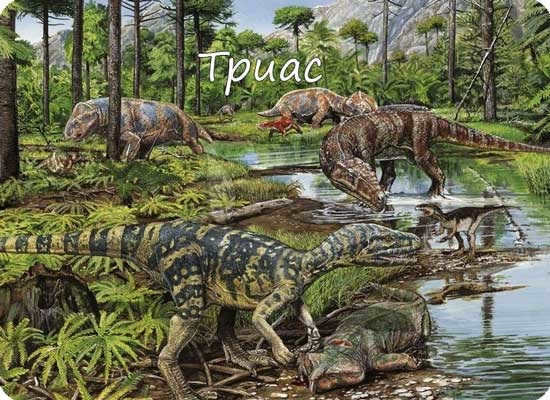
The climate in the Triassic period becomes warmer and wetter, leading to a slight increase in the area of seas. This change in climate also results in the formation of numerous lakes and swamps in the depths of the continents.
Within the plant kingdom, cold-adapted dwarf plants continue to dominate, with a significant increase in the flowering of bennettites, gnathi, and cycads.
The seas of the Triassic period are abundant with cephalopod mollusks. The most diverse forms of marine life are observed in marine reptiles such as ichthyosaurs and plesiosaurs. This era is also known for the dominance of dinosaurs, which inhabit the water, land, and air. Towards the end of the period, a primitive bird known as Archaeopteryx emerges, giving rise to a wide variety of bird species.
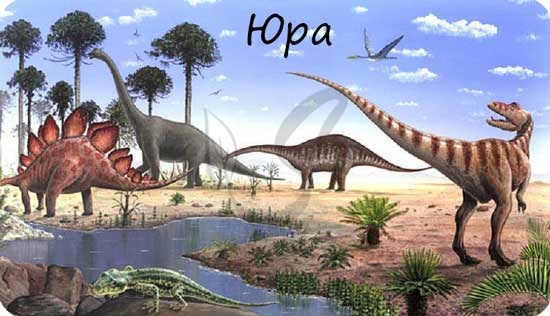
The climate undergoes a cooling trend, leading to increased geological activity during this time period, resulting in the formation of the Andes, the Alps, and the Himalayas. This period is named after the abundant chalk deposits that formed from the shells of foraminifera.
New types of plants, including flowering plants, begin to emerge. It is believed that these plants evolved from cold-resistant dwarf plants due to a sudden mutation in their female reproductive organs. The development of flowers and fruits are significant changes that occur during this period. Towards the end of the period, many cold-resistant plants become extinct.
Large mollusks and reptiles become extinct, marking the end of the dinosaur era. Mammals rise to prominence, thanks to their significant adaptations such as warm-bloodedness and live birth, which allow them to dominate. Marsupials and placental mammals also make their appearance during this time.
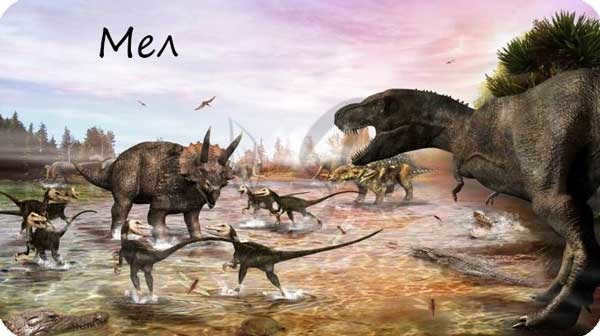
Cenozoic Era (Greek: kainos – new + zoe – life)
The Cenozoic Era began with the formation of the Alps and the emergence of other major mountain systems. I am delighted to live in the same era as you, and I would like to inform you that we are currently living in the Cenozoic Era, which has lasted for 67 million years. During this time, there have been multiple continental glaciations and the appearance of human beings.
Paleogene. palaios – ancient and genos – birth, age)
The Paleogene era started with the establishment of a warm tropical and subtropical climate. Forests and sparse woodlands spread extensively, and the majority of the animal species were forest dwellers.
The evolution of marsupial and placental mammals occurs simultaneously. Primates, carnivores, and ungulates emerge, while the avian population experiences a significant increase in diversity.
As the Paleogene epoch draws to a close, the climate transitions to a continental one, resulting in the formation of the first ice caps in the Arctic and Antarctic regions. Forested areas undergo a transformation, giving way to savannahs and shrublands.
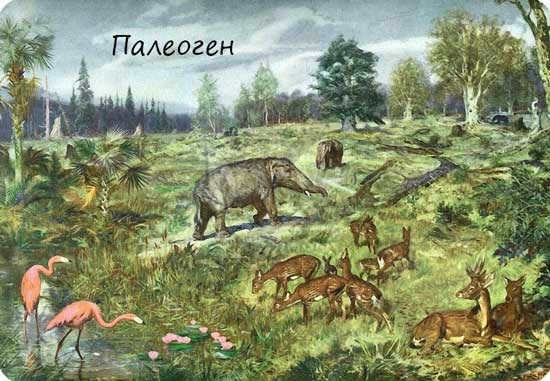
The climate during the Neogene period was warm and humid. The vegetation that was prevalent in the Paleogene era was gradually replaced by savannah and steppe plants, leading to the formation of semi-deserts and deserts.
Along the banks of rivers and lakes, one can find birch, juniper, pine, willow, and poplar trees. The open spaces of the Neogene period were home to a diverse range of animals, including hipparions (primitive horses), bulls, elephants, giraffes, and antelopes. Additionally, predatory giant running birds were not uncommon among the numerous and varied bird species.
The Neogene period is known for its abundance of primates, including the emergence of the first great apes, anthropoids.
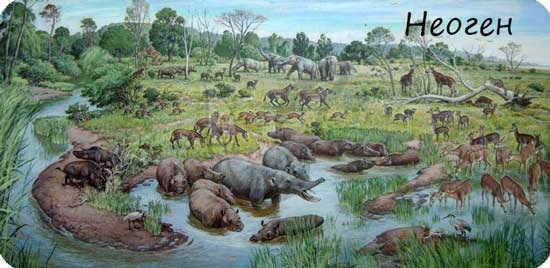
Climate change occurred repeatedly during this period. The surface of the Northern Hemisphere experienced glaciation. The flora also underwent changes, with the spread of taiga and tundra vegetation in Eurasia. The appearance of the flora took on its current form.
Bison, mammoths, rhinoceroses, and cave bears were commonly found among the animal population. Around 2 million years ago, a skilled individual emerged, marking the process of anthropogenesis – the development of humans, resulting in the emergence of the Homo sapiens species.
Intensive human activities, such as land plowing, deforestation, and trampling of fields by cattle, have led to the reduction of habitats for numerous animal species, causing some to become extinct.

I suggest using a mnemonic technique to aid in the memorization of the Mesozoic and Cenozoic Eras. You can remember the periods by the first letters of the words, “You, Yura, Mal – Wait, A Little, Huh?”
Pangaea and the incredible Australia
During the transition from the Paleozoic to the Mesozoic Era, the entire landmass was composed of one supercontinent, Pangaea (derived from the Greek word Πανγαῖα, meaning “all the earth”). In the Jurassic period, Pangaea split into two continents: the northern continent became Eurasia (which later separated into Eurasia and North America), and the southern continent became Gondwana (which later separated into Africa, South America, India, Australia, and Antarctica).
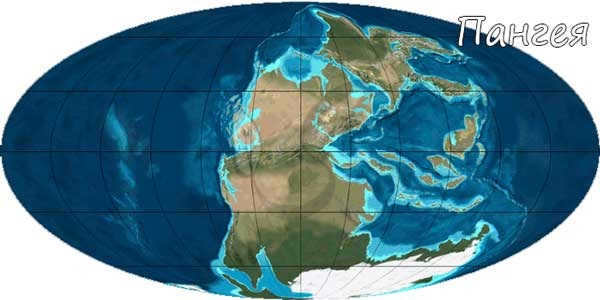
Australia demands special attention. This continent separated from the others earlier than any other, resulting in the development of unique flora and fauna that evolved in isolation from the rest of the world.
For this very reason, Australia boasts a wide variety of plant and animal species that cannot be found anywhere else on the planet: marsupial animals (kangaroos, martens, koalas), subterranean orchids, banksias, and countless other fascinating species.


© Bellevich Yuri Sergeevich 2018-2023
The contents of this article were crafted by Bellevich Yuri Sergeevich and are protected under intellectual property laws. Unauthorized copying, dissemination (including uploading to other websites and online platforms), or any other use of the information and materials without the prior consent of the rightful owner is strictly prohibited and can result in legal action. For access to the article materials and permission to utilize them, please reach out to Bellevich Yuri.
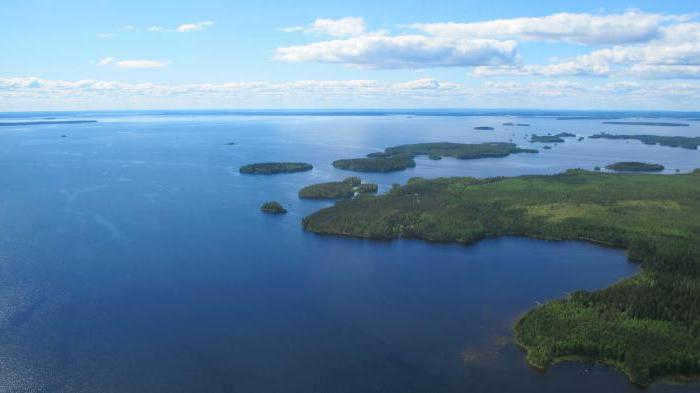
A unique table can be created that shows the progression of life on our planet Earth, using a chronological framework. The complete history of our planet can be categorized into various stages, with the most significant ones being the eras of life. These eras can further be broken down into smaller divisions, such as periods, epochs, and centuries.
The different epochs of life on Earth
The complete duration of life on Earth can be categorized into two distinct periods: the Precambrian, also known as the Cryptozoic (the primary period, from 3.6 to 0.6 billion years ago), and the Phanerozoic.
The Cryptozoic period encompasses the Archean era (ancient life) and the Proterozoic era (primary life).
The Phanerozoic period consists of the Paleozoic era (ancient life), the Mesozoic era (middle life), and the Cenozoic era (new life).
These two periods of life’s evolution are commonly subdivided into smaller periods called eras. The boundaries between the eras are marked by significant evolutionary events and mass extinctions. In turn, eras are further divided into periods, and periods are further broken down into epochs. The history of life’s development on Earth is closely intertwined with changes in the Earth’s crust and the planet’s climate.
The Age of Development, Time Ticking Away
Significant events are typically categorized into distinct periods of time known as eras. The passage of time is marked by a countdown, starting from the earliest forms of life and progressing towards the present. There are five recognized eras:
- The Archean Era.
- The Proterozoic Era.
- The Paleozoic Era.
- The Mesozoic Era.
- The Cenozoic Era.
Stages in the Evolution of Life on Earth
The development of life on Earth can be categorized into three main eras: Paleozoic, Mesozoic, and Cenozoic. Within these eras, there are smaller periods of time known as periods.
- Cambrian Period (Cambrian).
- Ordovician Period (Ordovician).
- Silurian Period (Silurian).
- Devonian Period (Devonian).
- Carboniferous Period (Carboniferous).
- Permian Period (Permian).
- Lower Tertiary Period (Paleogene).
- Upper Tertiary Period (Neogene).
- Quaternary Period, also known as Anthropogenic Period (period of human development).
The first two periods mentioned above are part of the Tertiary period, which lasted for approximately 59 million years.
Proterozoic Era (early life)
3. Quaternary Period, also known as Anthropogenic Period (period of human development).
The classification of the development of life on Earth involves not only dividing it into different time periods, but also recognizing distinct stages in the formation of living organisms and potential climatic changes such as ice ages and global warming.
- Archean Era. Significant milestones in the evolution of living organisms during this era include the emergence of blue-green algae – prokaryotes capable of reproduction and photosynthesis, as well as the development of multicellular organisms. Additionally, the appearance of heterotrophs, living protein substances capable of absorbing organic substances dissolved in water, played a crucial role. These advancements eventually led to the differentiation of plant and animal life on Earth.
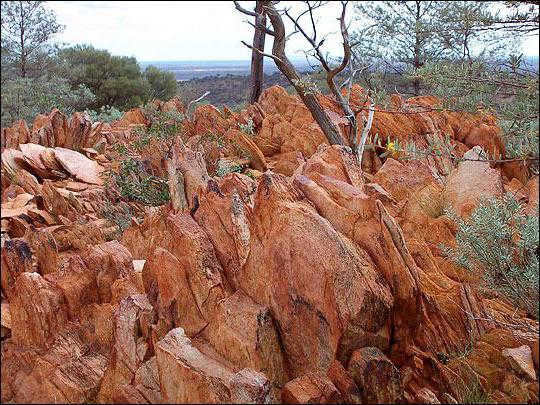
- The Cambrian period. Algae, marine invertebrates, and mollusks developed during this time.
- The Ordovician period. Trilobites transitioned to having calcareous shells. Cephalopod mollusks with straight or slightly curved shells became common. The first jawless fish-like vertebrates called telodonts emerged. Most living organisms were still centered in water.
- The Silurian period. Corals and trilobites flourished during this time. The first vertebrates appeared. Plants started to grow on land, specifically psilophytes.
- The Devonian period. The first fish and stegocephals emerged. Fungi appeared. Psilophytes experienced both development and extinction. Higher spores started to develop on land.
- The Carboniferous and Permian epochs. An ancient landscape teems with reptiles, including monstrous reptilian creatures. Trilobites meet their demise. The once lush forests of the Carboniferous epoch vanish. Holosems and ferns flourish in their place.
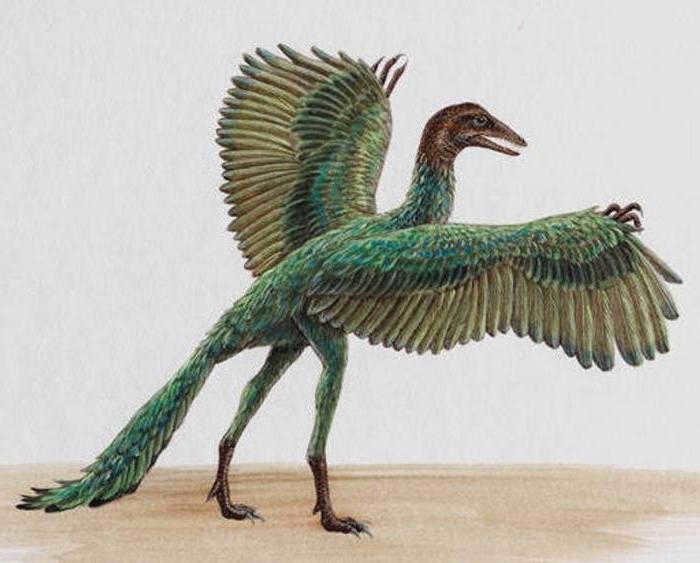
- The Mesozoic Era.
- The Triassic period. The expansion of plants (holosems). The increase in the number of reptiles. The emergence of the first mammals, bony fish.
- The Jurassic period. The dominance of holosemids, the appearance of coated seeds. The emergence of the first birds, the flourishing of cephalopod mollusks.
- The Cretaceous period. The spread of coated seeds, the decline of other plant species. The development of bony fish, mammals, and birds.
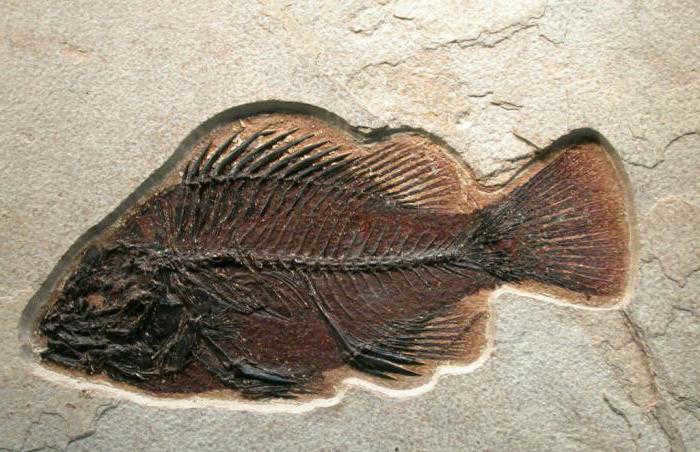
- The Cenozoic Era.
- The Paleogene epoch. This period is characterized by the emergence of covered seeds. Insects and mammals started to develop, and lemurs and later primates appeared.
- The Neogene epoch. During this period, modern plants started to form, and human ancestors appeared.
- The Anthropogenic epoch. Modern plants and animals continued to evolve, and humans emerged.

Representing the timeline of life’s evolution on Earth would be incomplete without considering the transformations in the abiotic environment. The emergence and progression of life on our planet, as well as the emergence of new plant and animal species, coincide with alterations in the non-living aspects of nature, such as climate.
Climate change: the Archean Era
The emergence of life on Earth was initiated during a period when land had a greater influence than water. The geographical features were not well-defined, and the atmosphere was predominantly composed of carbon dioxide, with minimal levels of oxygen. Additionally, the salinity of shallow waters was significantly reduced.
The Archean era is distinguished by frequent volcanic eruptions, lightning storms, and the presence of dark clouds. The rocks from this era are abundant in graphite.
Changes in Climate during the Proterozoic Era
The landscape is a rocky desert, with all organisms residing in water. The atmosphere experiences a buildup of oxygen.
Climate Variations in the Paleozoic Era
Different periods within the Paleozoic Era witnessed various climate changes:
- Cambrian period. The landmass remains barren, with a hot climate prevailing.
- Ordovician period. The most notable change is the widespread flooding of nearly all northern platforms.
- Silurian period. Tectonic shifts result in diverse non-living conditions. Mountain formation occurs, with seas dominating over land. Different climate zones emerge, including regions of cooling.
- Devonian period. A dry, continental climate prevails, leading to the formation of intermountain troughs.
- The Permian period was characterized by a warm climate, intense volcanic activity, the formation of mountains, and the drying up of bogs.
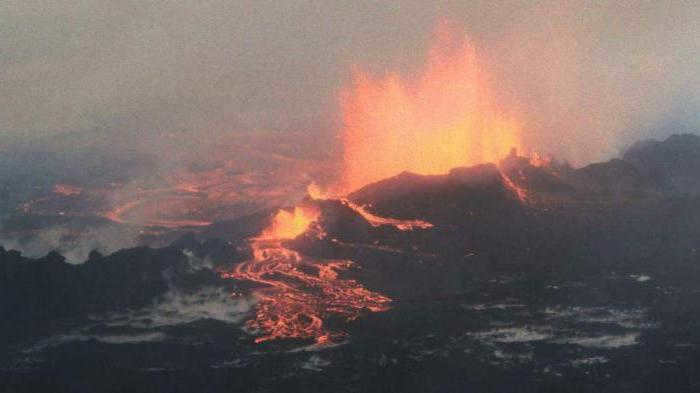
The formation of the Caledonian fold mountains occurred during the Paleozoic era, leading to significant alterations in the Earth’s geography. These shifts in topography had a profound impact on the planet’s oceans, resulting in the contraction of sea basins and the emergence of vast land masses.
Furthermore, it was during the Paleozoic Era that the majority of the world’s major oil and coal deposits were formed.
Changes in climate during the Mesozoic era
The climate during the various periods of the Mesozoic era can be characterized by the following distinct features:
- Triassic period. There was a significant amount of volcanic activity during this period, and the climate was predominantly continental and warm.
- Jurassic period. The climate during this period was mild and warm, with the dominance of seas over land.
- Cretaceous period. During this period, the seas gradually receded from the land. The climate remained warm, but towards the end of the period, global warming was replaced by a cooling trend.
Throughout the Mesozoic era, existing mountain ranges experienced collapse, while plains became submerged, as seen in the case of Western Siberia. In the latter half of the era, new mountain ranges such as the Cordilleras, Eastern Siberian mountains, Indochina, and partially Tibet were formed through Mesozoic folding. The prevailing climate was hot and humid, which created favorable conditions for the formation of swamps and peat bogs.
Climate Change in the Cenozoic Era
During the Cenozoic Era, the Earth’s surface experienced a significant uplift, resulting in changes in the climate. The continents of the Northern Hemisphere underwent transformations due to multiple glaciations originating from the north. These glaciations altered the appearance of the land covers and led to the formation of hilly plains.
